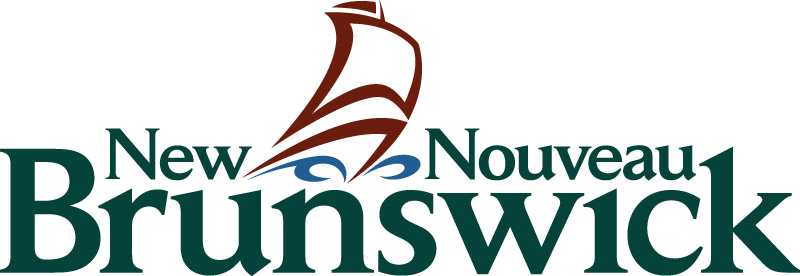.png)
This post is presented by Capital Dental Clinic.
Today’s article will be limited to the subject of tongue tie or also known as Ankyloglossia. Upper lip tie (upper lip attached to the gum line) and posterior tongue tie (tongue tie is hidden under the tongue lining) could be the objects of future discussions.
The Facts:
- Tongue tie is a congenital anomaly characterized by an abnormally short lingual frenulum. The tip of the tongue is anchored to the floor of the mouth, which may restrict the mobility of the tongue tip. This occurs when a common minor embryologic tissue is remnant. The persistence of midline sublingual tissue that usually undergoes apoptosis (death of cells that occurs as a normal and controlled part of an organism’s growth or development). Also called programmed cell death) during embryonic development. Tongue tie may extend all the way to the tip or in some cases may extend only partially to the tip. This restriction of normal tongue movement is affecting between 0.02% – 4.4% of newborn infants. This topic has brought quite a bit of controversy in regards to diagnosis, clinical significance and management.
- Effective breastfeeding requires newborns to fine-tune their tongue movements to adapt to their mothers’ particular nipple and breast anatomy and physiology. It is important to remember that the swallowing mechanism of the newborn and infant is different from the adult or older child. It has been noted that for successful nursing to occur, the infant must latch on to the mother’s areola with his/her upper gum ridge, buccal fatty pads and tongue. Suckling begins with the forward movement of the jaw and tongue. The tongue helps to make a better seal, but with minimal active action. The anterior edge of the tongue thins, cupping upwards to begin a peristaltic ripple back toward the throat. At the same time, the lower jaw squeezes milk from the ductules. Finally, the posterior part of the tongue depresses to allow milk to collect in the oropharynx before swallowing.
- It is clear that the restriction of the tongue movements must be quite extreme to interfere with sucking and swallowing. Most infants with tongue tie are asymptomatic and do not exhibit feeding problems.
Signs & Symptoms:
- In infants: Trouble breastfeeding – nipple trauma/difficulty latching and swallowing. Ineffective breast emptying and low infant intake/difficulty gaining weight.
- In toddlers: Speaking difficulties with sounds requiring a mobile tongue tip (sibilants and lingual sounds)
- In teenagers and adults: Unable to ‘’French kiss’’.
In infants, treatment is recommended only if the tongue is causing problems. If no symptoms are exhibited, there is no need to pursue any treatment unless there is a concern for future inadequate milk supply. If left untreated tongue tie can lead to untimely weaning or an unsuccessful breastfeeding experience. Frenotomy is a safe and effective procedure to release the tongue tie, improve tongue function and breastfeeding outcomes. That being said based on available evidence; frenotomy cannot be recommended for all infants with ankyloglossia. Getting the appropriate diagnosis by your lactation consultant or Health care provider is vital to the adequate treatment plan.
Management:
.png)
- Management of tongue tie in newborns is usually conservative, requiring no intervention beyond parental education and reassurance. Infants must be observed closely when a complete fusion of the tongue is found, and an early frenotomy can be performed if there is clinical dysfunction.
- A Frenectomy is an indication if the ankylose affects the movement of the tongue. It can cause eating, speaking and tooth development problems, which are often seen later in the child’s development.
Procedures:
- Frenotomy: Lingual frenuloplasty or frenotomy differs from lingual frenectomy in that the frenulum is not completely removed, but only altered. The goal of lingual frenuloplasty is to snip the lingual frenulum just enough to loosen it and increase the mobility of the tongue. In terms of procedure length and post- operative expectations, lingual frenuloplasty is very similar to lingual frenectomy performed by a provider of your choice under local anesthetic (or no anesthetic) at an early age to help with breastfeeding difficulties.
- Frenectomy: Lingual frenectomy is a surgical procedure that involves completely removing the lingual frenulum. It is performed by an oral surgeon with the help of local anesthesia. The procedure takes between 10 to 15 minutes to complete and the patient is left with a short row of stitches on the underside of the tongue. Serious side-effects are not typically seen with lingual frenectomy; however, potential complications include bleeding, infection, and in some cases, temporary or permanent nerve damage. This procedure is usually done when the patient is older and the cooperation is better, with the help of a local anesthetic.
Based on maternal observations, there are benefits to performing frenotomy on newborns suffering from tongue tie and feeding difficulties in their first week of life compared to after the first week. Frenotomy for tongue tie demonstrates a high degree of maternal satisfaction, is well tolerated and has been shown to improve breastfeeding and decrease pain and difficulty associated with breastfeeding.
The first step if you are suspecting tongue tie on your newborn is to call and ask your lactation consultant or healthcare provider (MD, DMD/DDS) to assess the soft tissue. He or she will do this by performing an oral exam of the child and recommend/perform/refer the appropriate treatment plan depending on the patient symptoms and examination findings.
Thanks for reading!
Marie-H Morin D.M.D
Capital Dental Clinic | (506) 458-8036
About the Author/Dentist

Dr. Morin graduated from the University of Montreal in 2005 with a degree in Dentistry. She then went on to complete a year of residency from 2005 to 2006 at the ”Notre-Dame Hospital” in Montreal.
From 2006 to 2008, Dr. Morin decided to extend her training at the University of San Francisco based in Fresno, California. By completing a 2 years hospital residency in Fresno, Dr. Morin got her dental license in the state of California & Minnesota.
Dr. Morin then continued to practice dentistry in the United States for five years before moving back to Canada in 2013.
Contact us today to schedule an appointment!
Dr. Biskupski and Dr. Morin
Capital Dental Clinic | (506) 458-8036 | 123 York Street, Suite 102 | Fredericton, NB E3B 3N6
Dr. Cain and Dr. Burns
Capital Dental Clinic | (506) 458-9669 | 123 York Street, Suite 201 | Fredericton, NB E3B 3N6



















